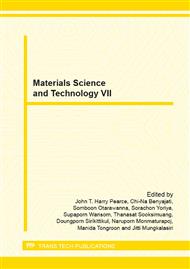p.182
p.188
p.193
p.197
p.211
p.219
p.225
p.230
p.236
Feasibility Study of Acoustic Emission Monitoring of Hot Cracking in GTAW Weld
Abstract:
Acoustic emission testing can be used to detect the energy emitted from material fracture and the advantage of this method is the real time monitoring, however the weld metal discontinuities are normally inspected by using conventional NDT methods such as Penetrant Testing (PT), Magnetic particle Testing (MT), Ultrasonic Testing (UT) and Radiographic Testing (RT) after the completion of welding. The weld defect must be repaired, which involves the cost and consumes a lot of time as well as reduce the reliability of manufactures. This paper presents the application of acoustic emission (AE) technique for monitoring and detecting the discontinuities during welding. In this study, gas tungsten arc welding (GTAW) was selected as test process. Carbon steel plate and autogenous welding technique were used to simulate the hot crack. The data acquisition (DAQ) and AE sensor were used to capture the acoustic signal generated during welding. The AE signals were amplified and filtered by using preamplifier. Then, signals were modified by wavelet transforms (WT) technique and classified by Fast Fourier Transform (FFT) technique. The results showed the possibility to use AE technique for monitoring and detecting the low signal amplitude generated from crack by using frequency domain. The advantage of this research is to propose the technique for monitoring the weld metal discontinuities during welding.
Info:
Periodical:
Pages:
236-240
Citation:
Online since:
March 2013
Keywords:
Price:
Сopyright:
© 2013 Trans Tech Publications Ltd. All Rights Reserved
Share:
Citation:


